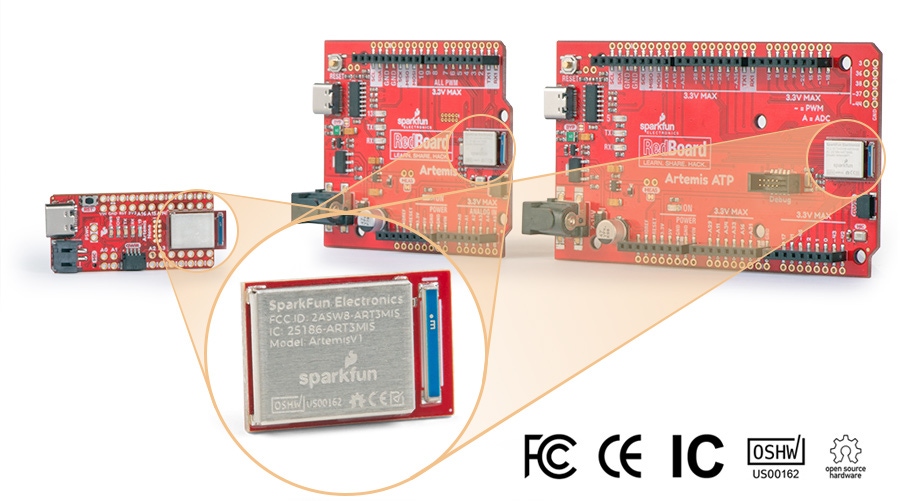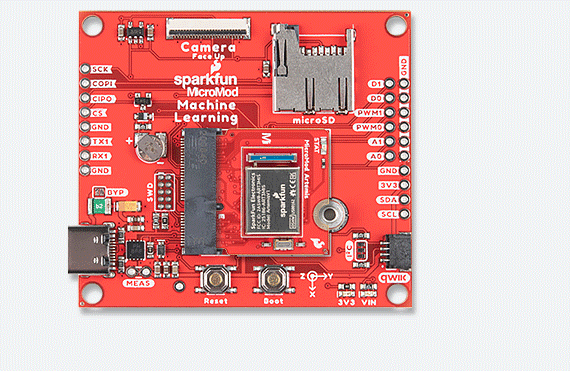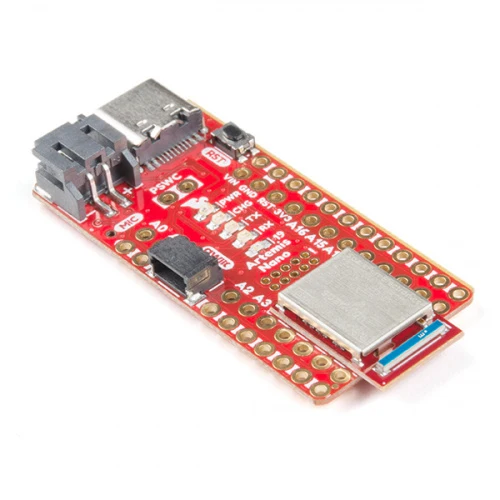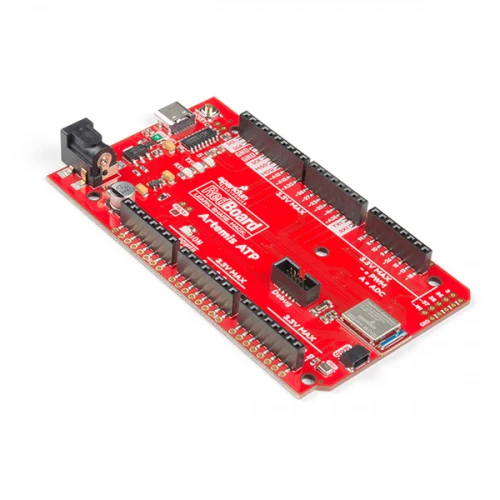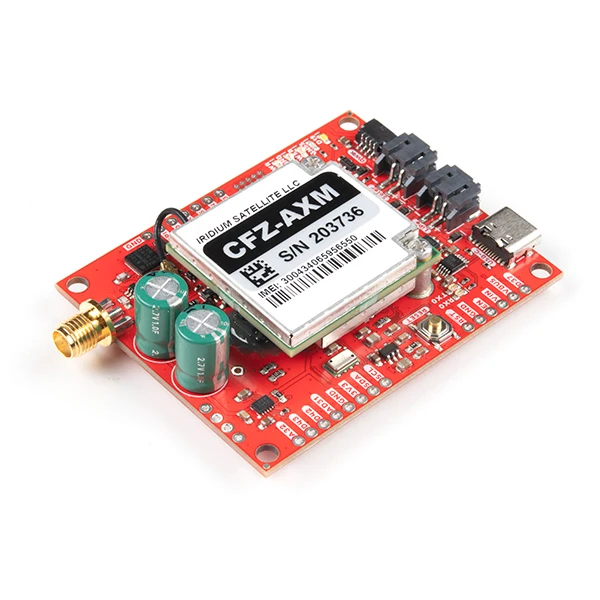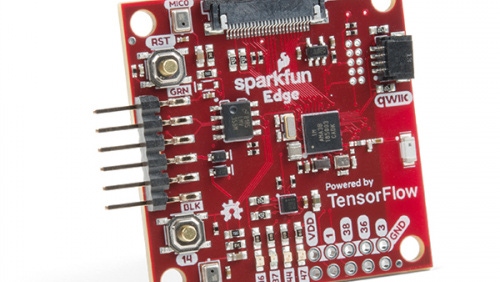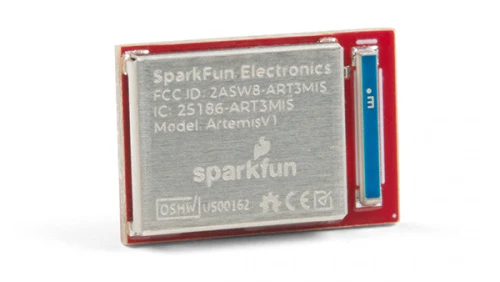

We shot for the moon to develop the next flagship microprocessor module that can be the mainstay for the next generation of development boards.
Artemis Features
From prototype to final production.
Extremely Fast
Cortex-M4F with BLE 5.0 running up to 96MHz and with as low power as 6uA per MHz (less than 5mW). Time-to-first-blink is less than five minutes.
Fully Certified
Artemis has received FCC/IC/CE Certification on world’s first open-source, US manufactured, BLE module.
TensorFlow Capabilities
Artemis is TensorFlow compatible making it available to anyone interested in machine learning.
Easy to Use
We've carefully designed the module so that implementing Artemis into your design can be done with low-cost 2-layer PCBs and 8mil trace/space.
Prototype to Final Product
Artemis provides users with a module is a full-fledged and ready-to-use processor intended to scale to production.
For Hobbyists and Pros Alike
Artemis can be programmed and used with the Ambiq Apollo SDK or with the written-from-scratch Arduino Core.
Mass Market Ready
Made in the USA at SparkFun's Boulder production line, the Artemis module is designed for consumer grade products beyond the Arduino IDE.
Ultra Low Power
The Apollo3 chip inside each Artemis module can be powered from a single coin-cell battery.
Available on Reel and Tape
To support those who want to use the Artemis module in production we provide tape & reel quantities (reels = qty of 500).
| Processor | Chip | Flash | RAM | MHz | GPIO | PWM | Radio/Antenna |
|---|---|---|---|---|---|---|---|
| ARM Cortex M4F | Apollo3 | 1M | 384k | 48 (96 capable) | 48 (interrupt capable) | 31 channels | Built in BLE |
| ADC | Differential ADC | UART | I2C | SPI | Interfaces |
|---|---|---|---|---|---|
| 10 channel* | 2 | 2 | 6 buses | 6 buses | PDM, I2S, Secure "Smart Card" |
* 14-bit precision with up to 2.67 million samples per second effective continuous, multi-slot sampling rate
MicroMod opens up many ways to use the Artemis module!
With our new MicroMod ecosytem you can pair a specialized carrier board for your project using our Artemis module!
Just a few of the carrier boards you can use:
- ATP: Access all the pins on your processor board.
- Input and Display: A great way to add data and input visibility.
- Data Logging: A customizable, low-power data logging platform.
- Machine Learning: Explore machine learning without a central computer or web connection.
Artemis Boards


The RedBoard Artemis takes the incredibly powerful Artemis module from SparkFun and wraps it up in an easy to use and familiar Uno footprint.


The SparkFun Artemis Thing Plus takes our popular Feather footprint and adds in the powerful Artemis module for ultimate functionality.


With a clear view of the sky, this board allows you to send and receive short data messages from anywhere in the world. Far beyond the reach of WiFi and GSM networks.
Artemis Resources
Quick Links:
Development Platforms for Artemis Module (GitHub):
- SparkFun Ambiq Apollo3 Arduino Core
- .json file needed for the SparkFun Ambiq Apollo3 Arduino Core:
https://raw.githubusercontent.com/sparkfun/Arduino_Apollo3/master/package_sparkfun_apollo3_index.json
- .json file needed for the SparkFun Ambiq Apollo3 Arduino Core:
- Mbed™ OS (Ported)
- AmbiqSDK (Ported)
- pyOCD (Ported)


This is an in-depth guide on developing in the Arduino IDE for the Artemis module and any Artemis microcontroller development board. Inside, users will find setup instructions and simple examples from blinking an LED and taking ADC measurements; to more complex features like BLE and I2C.


With the latest Artemis DK, board, we now offer full Bluetooth support within the Arduino IDE and development with Mbed™ OS. While we have worked tirelessly to get the Artemis module supported in the next Mbed™ OS release, the next release isn't slated until after the Artemis DK becomes available to the public. Therefore, this post will provide users with a jump start for developing with Mbed™ Studio, prior to the next release (in a beta of sorts), by utilizing our fork of Mbed™ OS.


This guide covers the general design of the board, the installation of the recommended software used to program the Artemis DK, and some basic examples. For more advanced functionalities, we have separate software development guides for the AmbiqSDK, Arm® Mbed™ OS, and the Arduino IDE platforms that users can reference.


How do I install a custom Arduino board/core? It's easy! This tutorial will go over how to install an Arduino board definition using the Arduino Board Manager. We will also go over manually installing third-party cores, such as the board definitions required for many of the SparkFun development boards.
Looking for support?
We have a dedicated forum category to all things surrounding Artemis. You can troubleshoot issues and provide feedback with others from our community of engineers and hobbyists using Artemis.

